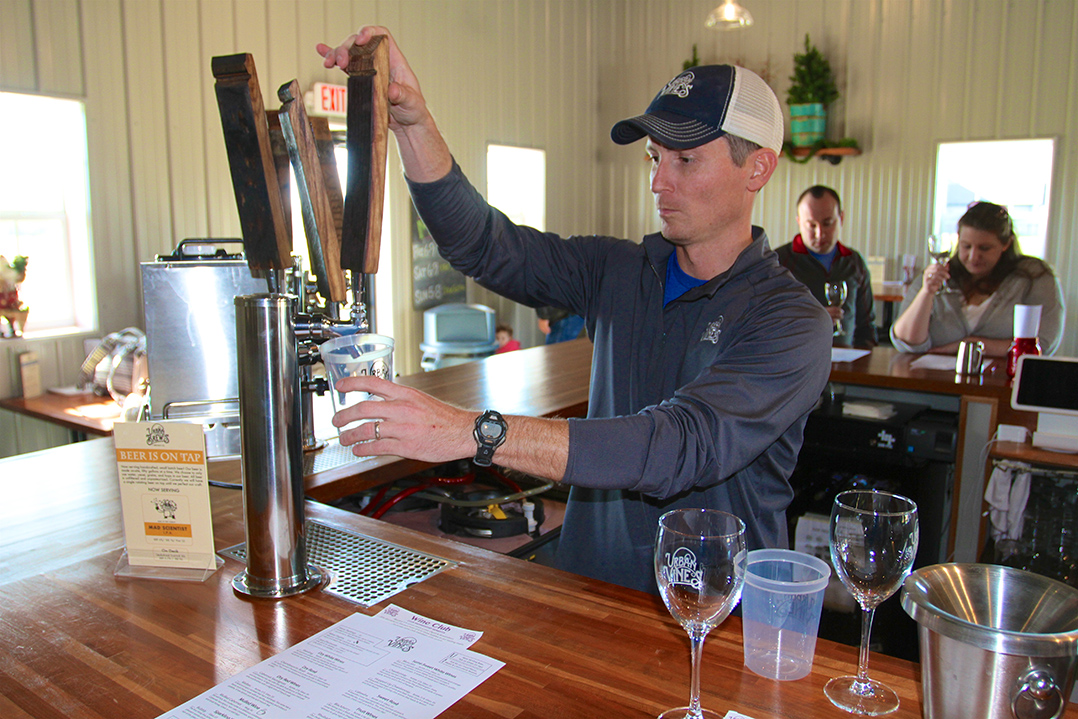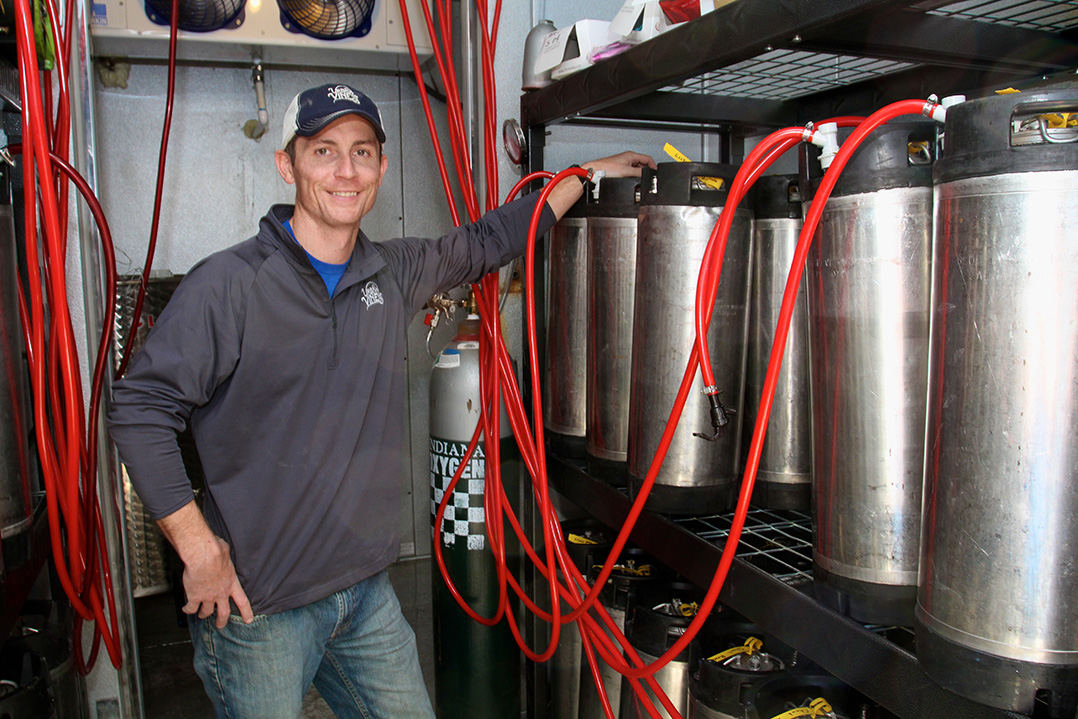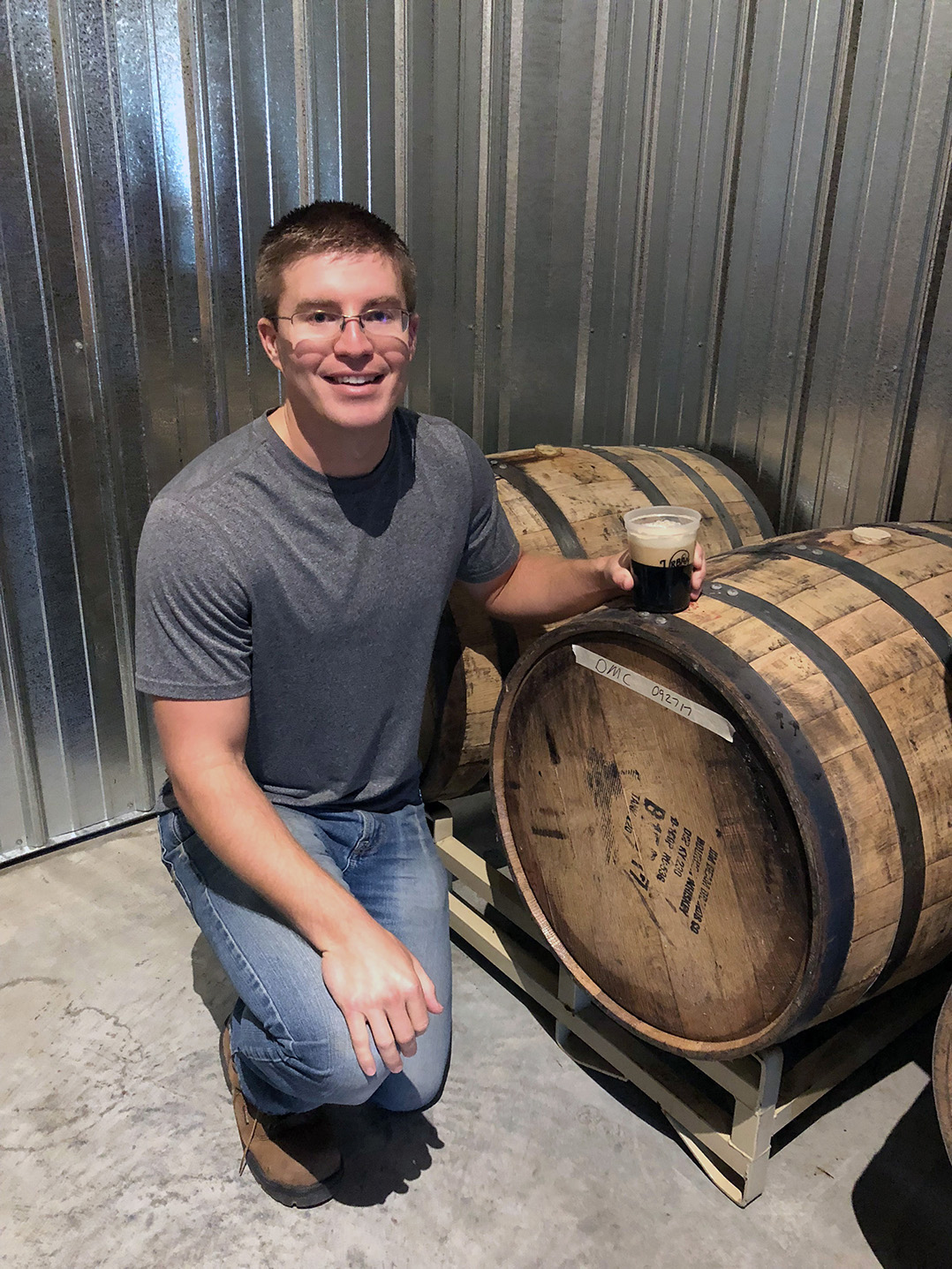Noah Herron found his passion for wine through beer and home brewing.
“When I first started thinking about opening a brewery or winery, I was leaning towards a brewery but still far away from opening one,” said Herron, owner of Urban Vines winery in Westfield. “Over a couple year period, I developed a taste more for wine and began brewing more wine. I got the idea of opening the winery first with the idea of starting to make beer on the premise as well.”
The 34-year-old Westfield resident has brewed beer for a decade and wine for five years. Urban Vines officially opened in May, and growth has happened quickly for the city’s first winery. In six months, Urban Vines has already met its 5-year revenue goal. But Herron said the expense goal also has been met with purchases such as a brewing kettle and walk-in cooler.
“Once we opened and got a handle for the winery and got that kind of smoothly working, I decided to apply for a brewing license to get equipment in and start working on bigger batches,” Herron said.
Upon graduating from brewing five gallons in his home to making mass batches of beer in 50 gallons, Herron learned the process through different measurements of grains, hops and different boiling processes.
“We’ve worked the last few months perfecting beer, and it’s taken a while to get the beer where we want it and where we are comfortable with it,” he said.
The wait paid off. Urban Vines released its first beer, a Mad Scientist IPA, Nov. 15. The release of Smokehead Scottish Ale followed eight days later. The winery/brewery plans to release a bourbon barrel stout Dec. 1 and a German pilsner Dec. 15.
Herron has recruited Marc Rupenthal as assistant brewer and winemaker. Rupenthal relies on his chemistry degree to brew beer unique to Urban Vines.
“Coming from Purdue with a degree in chemistry, and several years as an analytical chemist, I approach brewing from the molecular level,” Rupenthal said. “Having this type of a background gives us a great head start on developing new recipes and perfecting our current ones. After all, brewing is just one big chemistry project, and we are able to look at things from a different perspective.”
Urban Vines clientele is 80 percent women and 20 percent men. Herron said he hopes more couples will be attracted to the winery with the integration of its first brews.
“We plan on always having three beers on tap,” Herron said. “We hope to have a couple staples and one rotating.”
Patrons also can purchase bullets, which are 32-ounce containers of beer packaged for take-home.
Herron said brewery/winery combinations are gaining popularity, but he plans to take Urban Vines one step further. He is already working toward getting his distiller’s license to make spirits such as vodka, tequila and gin. He can apply for a distiller’s license when he’s had his winery license for two years, a milestone that will be reached late next year.
Bourbon and whiskey have a long aging process, so Herron said he’s planning on making spirits quicker when he receives his distiller’s license.
Even with the addition of beer and possibly spirits in the future, patrons under 21 can still visit Urban Vines. A playground targeting young children was even constructed outside the winery.
Indiana law makes it legal for kids to stand near the bar while their parents enjoy wine and liquor, but the rules are different for beer. For this reason, a corner of Urban Vines is blocked with railing for the adults-only area where beers are tapped behind the bar.
In the meantime, Herron said the response to the beer has been solid. He sold 200 pints in the week following the tapping of Mad Scientist IPA.
“The response has been really good,” he said. “Most people have liked it that I’ve heard, and we’ve sold a lot of takeout bullets where people taste it and want to take it home.”
For more, visit urban-vines.com.
(ZACH can you add little wine glass/beer pints next to each time date on the timeline?)
Wine and beer-making timeline
Wine timeline:
Step 1: Grapes are pressed and put into tanks
Step 2: Grapes are fermented in large tanks until sugar is depleted (1-2 weeks)
Step 3: (Whites) Cold stabilization begins for white wines (2 weeks)
Step 3: (Reds) Barrel aging begins for red wines (6-24 months)
Step 4: Wines are filtered and bottled
Beer timeline:
Step 1: Crushed grains are mashed in hot water. (60 minutes)
Step 2: Grains removed and wort is boiled (60 minutes)
Step 3: Wort is then cooled and fermentation begins (4-7 days)
Step 4: Moved to secondary container to continue aging (1-2 weeks)
Step 5: Kegged and CO2 is added (2 weeks)
Step 6: Ready to serve






